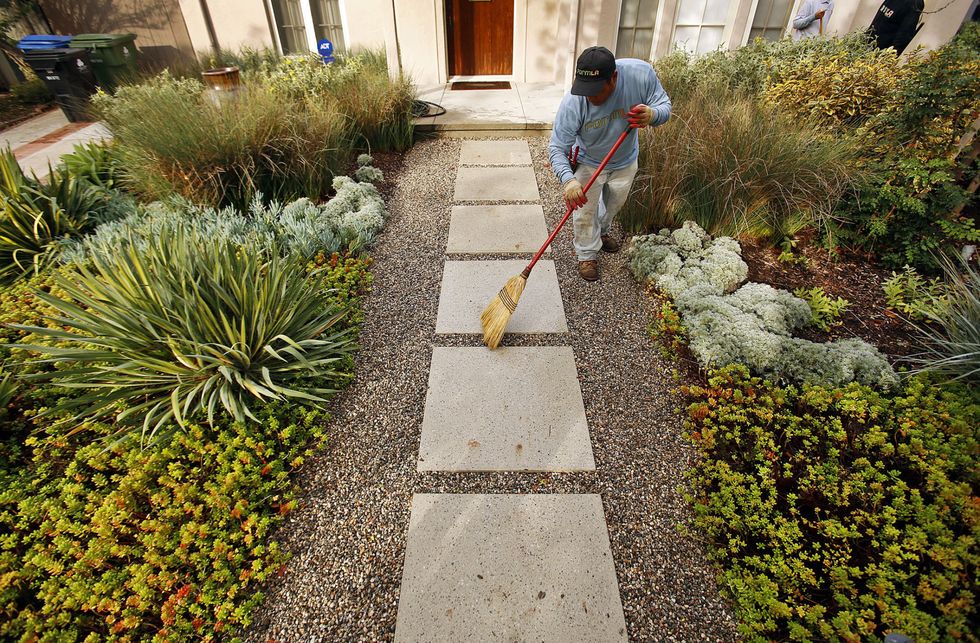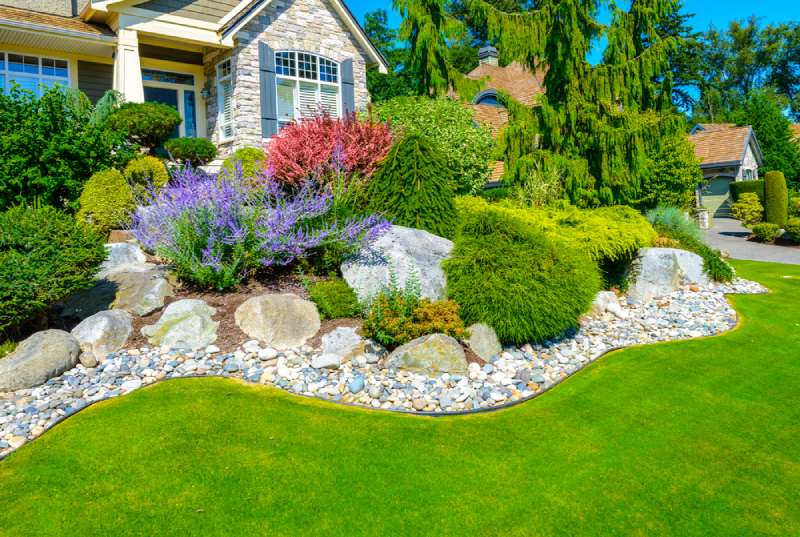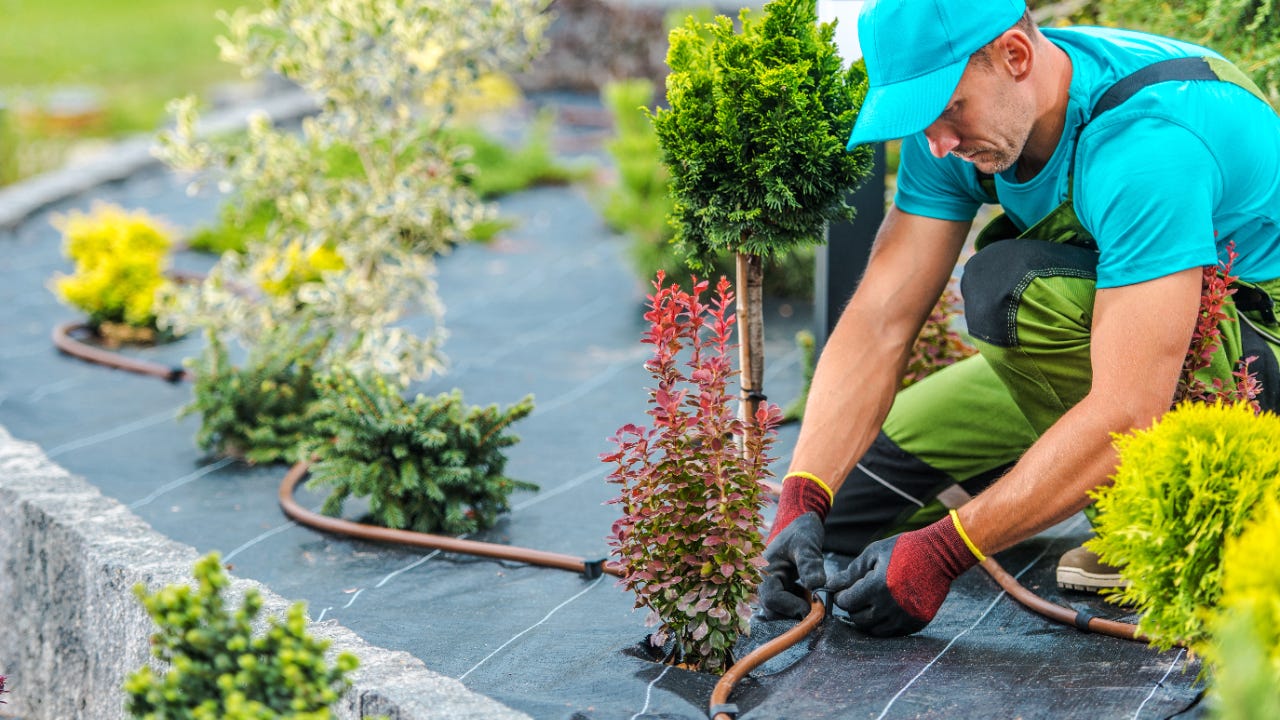Transform Your Exterior Area with Specialist Palm Desert Landscaping Providers
Transform Your Exterior Area with Specialist Palm Desert Landscaping Providers
Blog Article
A Comprehensive Overview to Creating and Implementing Effective Landscaping Solutions
The art and science of landscaping extend past simple aesthetic appeals; they include a thoughtful integration of style principles, environmental stewardship, and functional execution. A detailed overview to efficient landscaping services begins with a comprehensive understanding of your outside space, stressing the relevance of balance, unity, and percentage. As we explore sustainable methods and the option of suitable flora, the effects for biodiversity and community health become significantly apparent. What techniques can one use to make sure these landscapes not only prosper but likewise grow attuned to their surroundings?

Recognizing Landscape Style Principles
One could question what fundamental components contribute to effective landscape style. At its core, effective landscape design pivots on several vital concepts that direct the plan and choice of elements within a room. These concepts include unity, percentage, balance, and rhythm, each offering to develop a harmonious outdoor setting.
Unity describes the cohesive relationship among various parts, making sure that they interact cosmetically and functionally. Balance can be achieved via symmetrical or unbalanced plans, permitting the landscape to feel secure and welcoming. Proportion involves understanding the range of aspects in connection to each various other and the surrounding environment, promoting visual consistency and convenience.

Analyzing Your Outdoor Space
Before carrying out the concepts of landscape layout, a thorough analysis of your exterior area is vital. This initial examination helps define the range of your landscape design project and guarantees that your layout aligns with the distinct characteristics of your home. Begin by analyzing the measurements of your room, taking exact dimensions to comprehend the available area for numerous components such as yards, outdoor patios, and pathways.
Next, observe the existing features of your landscape, including topography, dirt top quality, and drainage patterns. These aspects substantially affect plant option and placement. Additionally, examine the sunshine direct exposure across various locations throughout the day, as this will affect the types of plants that grow in your garden.
Take into consideration the microclimates developed by structures, trees, and other challenges, as they can influence temperature and moisture degrees. Last but not least, bear in mind of any kind of existing plants or hardscape elements that you desire to get rid of or maintain. This detailed examination prepares for a knowledgeable and effective landscaping remedy, making sure that your design is not just visually pleasing yet likewise functional and lasting for years to find.
Sustainable Landscape Design Strategies
Integrating sustainable landscaping methods is vital for producing an eco accountable outdoor space. These techniques not just advertise environmental balance yet also boost the visual and useful value of a landscape. One fundamental strategy is the use of native plants, which need less water and maintenance while sustaining local wildlife. Implementing effective irrigation systems, such as drip irrigation, minimizes water waste and guarantees that plants receive adequate dampness.

An additional efficient strategy is the critical positioning of trees and bushes to offer all-natural windbreaks and shade, therefore reducing power expenses (Palm Desert Landscaping). Rain yards can be integrated right into the landscape style to manage stormwater overflow efficiently, filtering system pollutants before they go into waterways
Selecting the Right Plants
Picking the right plants for your landscape is important to achieving both visual charm and eco-friendly consistency. The process begins with an understanding of your neighborhood climate, soil conditions, click this link and the details microenvironments within your landscape. Evaluating factors such as sunshine direct exposure, moisture degrees, and existing plants will assist you select plants that flourish in your unique setup.
Consider including native plants, as they are well-adapted to neighborhood conditions, require less upkeep, and support neighborhood wild animals. Furthermore, choosing a varied selection of varieties can enhance biodiversity while lowering the risk of disease and parasite outbreaks. It is important to review the development routines, growing durations, and seasonal colors of prospective plants to create a natural and dynamic landscape.
Furthermore, consider the intended usage of the area; for example, if the location will experience high foot website traffic, choose resistant ground covers. By attentively selecting plants that align with both your visual goals and ecological requirements, you can create a sustainable landscape that not just improves your residential property however also adds positively to the bordering community.

Execution and Maintenance Approaches
When the right plants have been chosen for your landscape, the focus changes to reliable implementation and continuous maintenance strategies. Effective setup begins with appropriate website prep work, that includes dirt testing to figure out nutrient levels and pH, adhered to by modifying the dirt as needed. Thoroughly organize plants according to their growth habits and light demands, guaranteeing appropriate spacing to promote healthy and balanced development.
Watering is an essential component of implementation. Develop a watering routine that takes into consideration the particular needs of each plant species, readjusting for seasonal adjustments. Using drip watering systems can enhance water performance and minimize drainage.
Upkeep approaches have to be implemented to you could try this out make certain the durability and vigor of your landscape. Normal tasks consist of weeding, mulching, and pruning to control growth and avoid disease. Fertilization must be carried out based upon soil examinations, providing the required nutrients without over-fertilizing.
Monitoring for diseases and parasites is important; early discovery can stop substantial damages. Last but not least, seasonal modifications to maintenance routines, such as preparing and winterizing perennials for springtime growth, will certainly guarantee that your landscape continues to be visually enticing and healthy and balanced year-round.
Final Thought
Finally, effective landscaping remedies need a detailed understanding of design principles, precise analysis of outside rooms, and the application of sustainable methods. The selection of suitable plant types plays a critical function in enhancing visual appeal and eco-friendly durability - Palm Desert Landscaping. Successful execution and continuous upkeep further make sure the durability and vitality of landscapes. By incorporating these elements, landscapes can be transformed right into attractive, functional environments that advertise biodiversity and contribute positively to area well-being.
One might question what fundamental components contribute to efficient landscape layout. At its core, successful landscape design hinges on a number of key concepts that lead the setup and selection of aspects within a space.Picking the right plants for your landscape is critical to attaining both aesthetic allure and environmental consistency. It is crucial to review the development routines, flowering durations, and seasonal shades of prospective plants to create a dynamic and natural landscape.
As soon as the appropriate plants have actually been chosen for your landscape, the focus changes to efficient execution and recurring maintenance methods.
Report this page